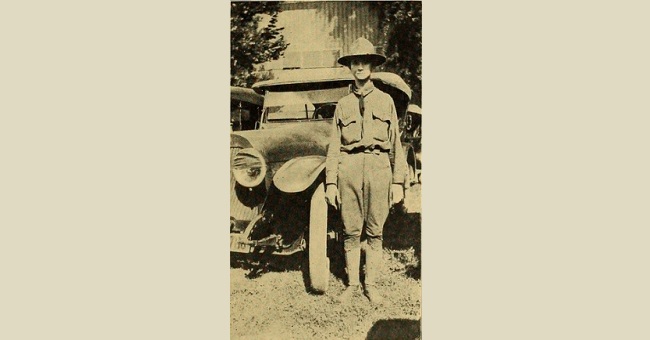by Mike Roberts, Church Historian
Who was speaking to our congregation 100 years ago? May of 1918 was a troubled time in the history of the world. World War I was raging in Europe. In America, after pledging not to involve the United States in that war, events forced Woodrow Wilson’s hand. Now, the American army had arrived in France and was engaged as allies with England, France and other countries opposing Germany and the Central Powers. This placed Americans in harm’s way in the most hideous war in world history. In less than a year of fighting, over 100,000 American lives were lost in the trenches of France. The French saw 1.4 million soldiers die in that war. This does not include millions of others permanently disabled. The result of this conflict was the cutting of a giant swath through an entire generation of men in all of the countries involved in “the war to end all wars.” This fall will mark the 100th anniversary of the end of that conflict. Our minister during that war was Anthony Beresford.
With the departure of previous minister Samuel Ayres, Anthony Bevis Beresford took the pulpit for the First Society in 1909. Beresford came to us from Baltimore, Maryland, where he had served as minister since 1899.
He was born on April 17, 1866, in Detroit, Michigan, the son of Carl and Mary Wheelwright Beresford. However, he actually was born Anthony Bilkovsky Jr., probably the actual name of his immigrant father. At some time in the 1890’s, Anthony Jr. legally changed his name to Beresford. His father had immigrated with three children and a wife to the United States from Bohemia about 1865. Thus, our minister probably had knowledge of and deep attachments to Europe and its politics. Anthony was born shortly after his family’s arrival in Michigan. His father ran a butcher shop.
Beresford eventually attended Tufts University where he obtained his undergraduate degree, then continued at Lombard College where he earned a Doctor of Divinity degree. He was ordained in 1893 as a Universalist minister. In 1892, he began his pastoral career at Swampscott, Massachusetts. He stayed there until 1899 when he moved to Baltimore.
Reverend Beresford stayed with our Cincinnati church for 11 years and at the time had the longest period of service in the church’s history. He preached during the terrible years of World War I and frequently addressed the major issues of the world from the pulpit. He initially praised the efforts of President Wilson in keeping us out of the European war and spoke frequently of the catastrophic loss of life brought on by that conflict and how it affected his congregation’s vision of a universal brotherhood of man. However, leading up to the American participation in the war, he became a strong supporter of the military effort and even served as a member of the Patriotic Board of Instruction in Cincinnati.
During his tenure here, Beresford spoke often in support of the laboring masses and even predicted that a five-hour work day was in the nation’s future. He also felt too much wealth was concentrated in the business class and a more equitable distribution of that wealth among the working classes would make America and other free countries stronger. He advocated for an international peace organization before the creation of the League of Nations.
In 1920, Reverend Beresford left Cincinnati to return to his roots, taking a position as pastor of the Universalist Church in Farmington, Michigan, a Detroit suburb, where he stayed for six years. He then returned to Cincinnati serving the Mohawk Presbyterian Church until his retirement. On November 11, 1940, he suffered a cerebral hemorrhage and died at the home of his son.
Beresford married Mary Evelyn Renshaw on May 31, 1892, in Boston, Massachusetts. Reverend Beresford’s awareness of European affairs may also have been influenced by the fact that his wife was a native of England. The Beresfords had one child, Curtis, who became a real estate broker in Cincinnati. Both Reverend Beresford and his wife are buried in Spring Grove Cemetery.
Image: Picture of Soldier in Hughes High School (Cincinnati) Yearbook, 1918.
Image source: Flickr.

